According to Andreas Capellanus, a late twelfth-century author, “Love is an inborn suffering proceeding from the sight and immoderate thought upon the beauty of the other sex”. This Valentine’s Day, whether you have a special someone or not, I’m sure that, like mine, your Facebook feed is probably full of engagements, gushing declarations of love, #luckygirl, and pictures of flowers, teddies, jewellery, chocolates, bubble baths….. If you do not have someone to spend the day with, then all the posts can be somewhat groan-inducing, but never fear! Luckily, the question of how to woo a lover has been around for centuries, and so if modern techniques of swiping right and playing texting games haven’t helped you out so far, then perhaps you could take some advice from our medieval ancestors.
First of all, of course, the most useful thing would be for you to have been born into a family of noble blood, with titles and land to boot. In that case it doesn’t matter if you’re 2 years old or if you have a huge wart on the end of your nose, because those lovely wealthy assets will be attraction enough for you to get married off successfully.
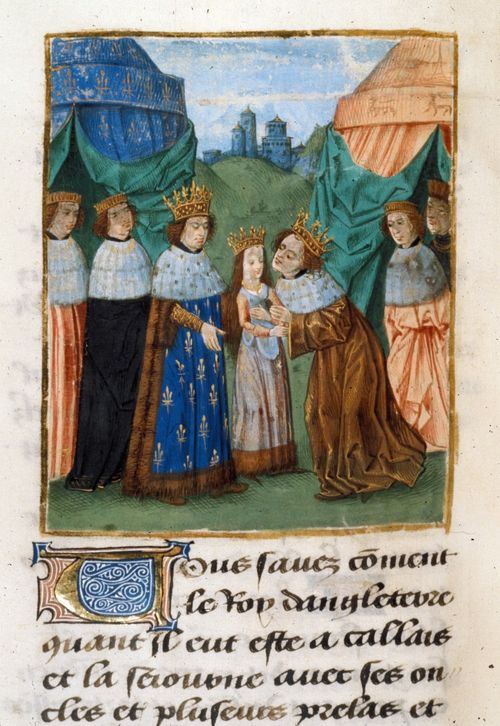
Richard II marrying princess Isabel, daughter of Charles VI, King of France when she was just 6 years old (titles and money talk!). From Jean Froissart, Chroniques, Netherlands (Bruges), c. 1480-1494, Royal 14 D. vi, f. 268v.
If, however, you are not swimming in jewels, then you may need to try some other tactics. First, you would need to try and make yourself physically alluring to the opposite sex. Obviously, beauty standards varied just as much as they do today, and what was hot and in during the 9th century wouldn’t necessarily work in the 13th. However, at most points during the medieval period, blonde haired women were viewed as the height of attraction – many medieval queens were pictured with blonde hair, even if we know from contemporary descriptions that they were not fair-haired. So, if you are not blessed to be a blonde bombshell, don’t worry because we have got you covered; women would try and make their hair blonder by using saffron, stale sheep’s urine, onion skins, or by spending time in the sun. Piece of cake! A high forehead is also very sexy, so pluck, shave, or burn away any excess hair.
It is also important to wear some makeup, so as to enhance your beauty (but don’t wear too much in case you look like a hussy, or in case you tempt some married men to want to commit adultery with you – which would be entirely your own fault). In lieu of having a local Sephora, you can turn to nature. Eye makeup isn’t in fashion, although if you really want to you can put drops of Belladonna (aka deadly nightshade) in your eyes to dilate your pupils. Pop on some rouge from ground up plants, and to make your lips a more attractive colour you can stain it with crushed berries, or rub lemon juice on them.
Finally, you need to throw away the fake tan bottles, and cancel your next trip to the Mediterranean; pale is IN, the paler the better – what better way to show off your noble blood, and the fact that you don’t have to spend your days toiling in the fields like the peasants.
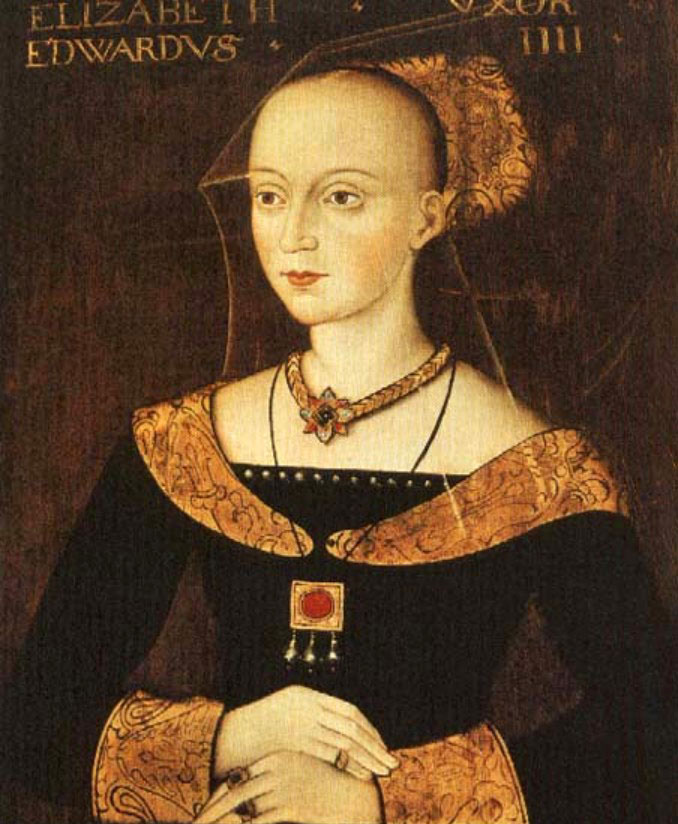
Queen Elizabeth Woodville, wife of Edward IV, a renowned beauty of her time – here you can see the fashion for a high forehead, whilst her blonde hair is demurely hidden as was the trend at the time.
If you’re a bloke, then don’t think that you can get off easy on the fashion front. It was just as important, if not more, for medieval men to take care of their appearance and have an excellent taste in fashion. In many areas and periods of medieval Europe, whilst women were made to wear bulky, boring clothes, it was the men who got to wear sumptuous fabrics, and form-fitting clothes. In fifteenth-century France, whilst women wore loose-fitting clothes that hid most of their body, men would wear tight trousers that accentuated their calves (amongst other features). This was part of the reason that people were so shocked when Joan of Arc dressed in men’s clothing – it left little to the imagination, and was far more revealing of her female form than women’s clothing.
Dressing, particularly for men of a higher social status, was not a simple t-shirt-and-jeans affair as it often is today. There were plenty of different layers and aspects to make you look tip-top. A man may wear a tunic (long-sleeved shirt), with a doublet on top (tight-fitting jacket), and then a cloak (probably hooded) on top. You may also have worn a vest, or a jerkin (another close-fitting jacket). For the bottom half, tights were all the rage, and were worn underneath breeches which covered the hip and thighs. If you were of a high enough status to be allowed to carry a sword with you, then you would also have a sword belt across the waist, or perhaps a baldric which went across the chest from the right shoulder to the left waist.
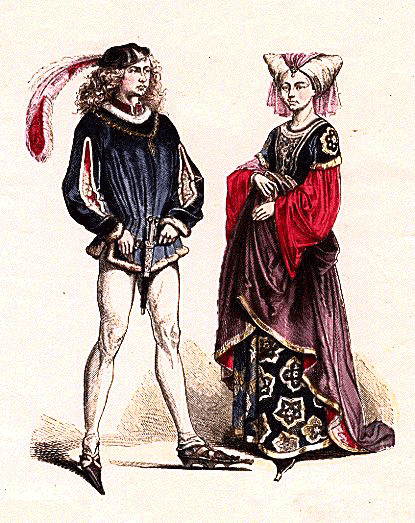
Here you can see an example of late fifteenth-century French fashion and the difference in exposure for men and women.
So, now you’re kitted out in all the garb and can be sure that you’re looking beautiful enough to attract some interest. Now, one of the easiest places to meet someone, particularly of a higher class, would be at a medieval feast. There were countless manuals to help you negotiate the tricky etiquette of the court, and once the idea of chivalry and courtly love began to explode in the mid-to-late medieval period, countless more books emerged.
If you were a young noblewoman looking to bag yourself a husband, then the fourteenth century book, The Book of the Knight of La Tour-Landry, composed in France, may have been one that you turned to. Supposedly, the book was written by a widowed knight as a gift for his three young daughters, in the desire that although they would be brought up without a mother, they would still learn how to act like proper young ladies. The book was incredibly popular, being translated both into English and German, and circulating for centuries.
The important thing to remember if you are a woman is that you have to behave irreproachably forever if you are to both win a husband, and maintain his affections. The author of the Tour-Landry gives a warning in the case of a young woman who was to marry a perfect young gentleman. However, when the couple met, the young woman was too familiar with the man, and he was put off of her. The best way to behave, the Knight says, is to be:
“Meek, well taught, firm in estate, behaving, and manners, soft and easy in speech, and in answer courteous and gentle… for many have lost her marriage by too much discovering himself, and to have many words”
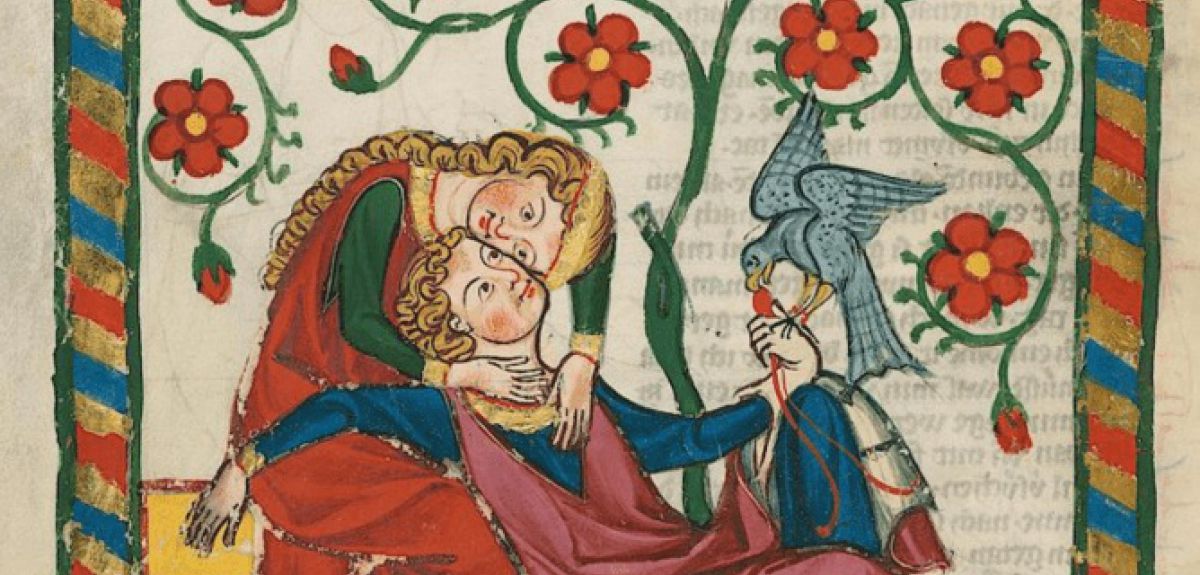
Lovers pictured in the 14th-century Codex Manesse.
Even once you have a husband it is easy to lose his love. The Tour also recounts a wife who had become jealous whenever her husband spoke to other women. After one encounter, the wife got into a fight with a woman who broke her nose. The wife’s nose was permanently crooked thereafter, and “her husband might never find in his heart to love her heartily as he did before, and he took other women, and thus she lost his love through her jealousy and folly”.
Your reputation is also just as important to maintain the love of your husband. Another story in the Tour explains that one woman was quite a party animal, and loved going to feasts and celebrations, leaving her husband at home. At one such feast, the lights went out, and when the lights came on again she was seen sitting in a corner with a knight. Although she wasn’t doing anything with the Knight, her husband’s brother happened to be at the feast and saw what happened, telling the husband all about it. From then on, the wife had lost her husband’s love.

Enjoying this blog post? Buy me a hot chocolate!
Consider donating the cost of a hot chocolate to me, so I can continue to write and run Just History Posts.
£3.50
It wasn’t just women that had to be careful not to mess up their chances at wedded bliss, however. Whilst we may not think of it now, many medieval women did have a level of autonomy in choosing their husband, and they could be just as quick to call off a wedding if they thought the man didn’t live up to their expectations. One example comes from a medieval defamation case a farmer named Vincent brought against another man, Alexander. Vincent was supposed to marry Mary, and it was going to be quite a good match for him, but Alexander stirred up trouble by telling Mary that Vincent did not sow or plough his land in good time and was not a good farmer. Because of this, Vincent lost Mary’s love and the marriage – as who wants to marry a rubbish farmer? – costing Vincent dearly.
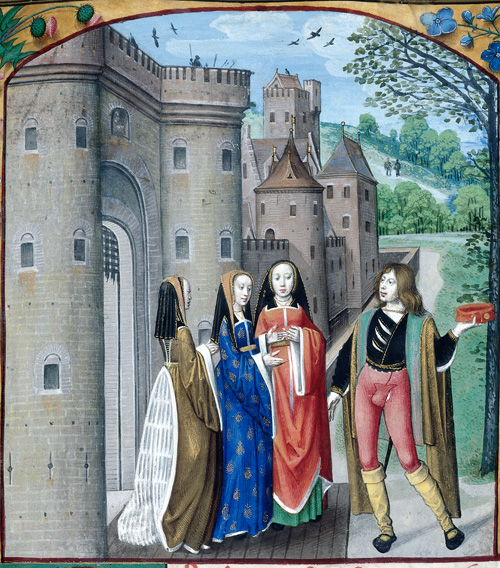
A lover addressing three women, from the Castle of Love, Royal MS 16; f. 188, Charles d’Orleans, 1483.
In the era of courtly romances and Arthurian legend, there were other ways a man could win the affections of a lovely lady. A man could go on crusade, or joust in tournaments in his lady’s name, or adventure across the land to win honour and renown so that he was worthy of his lady’s hand. If sword fighting isn’t quite your forte, then poetry or song-writing were also popular ways to express your love to a lady. In courtly love literature, however, the best way for a knight to show his devotion and obedience to the lady he is unworthy of is to perform heroic deeds to win her favour.
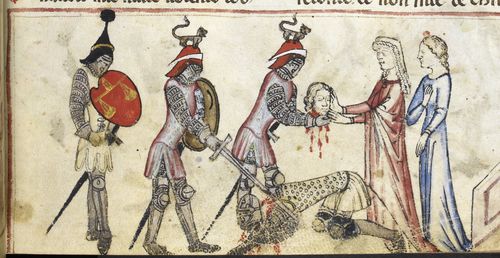
Why not prove your heroic deeds to your lady by bringing her a severed head of your enemy? Detail of a miniature from the ‘Meliadus’, Italy, 1352-1362.
So ladies, to win a man of your choice, you must dress well, look presentable, with elegant clothes, nice hair, jewels and makeup – but not TOO much in case it puts across a negative portrayal of yourself. You must also make sure not to get too jealous or be too much of a party animal, but still be beautiful, kind, entertaining and intelligent enough to attract a man (or else just have a very wealthy father and no siblings – nothing else about you matters if you’re loaded, you will find a husband quickly). And men, ditto on your looks and cash, and you can get away with a lot more scandalous behaviour – just remember to plough your land well and maybe slay a few dragons! And if you’re not heterosexual, then just hope you live in a place where you can get away with it without too much scandal – or just be born a King and have all the affairs you want! (*You will still have to have a lovely Queen, however).
Previous Blog Post: The Enduring Appeal of a Lolcat: Ancient and Medieval Cats as Pets
Previous in Seasonal: Happy New Year or End of the World? Early Modern Apocalypse Predictions
More on love: Origins of Wedding Traditions
List of Blog Posts: here Blog Homepage: here
Buy my books via the pictures below! Or why not check out our shop?

Follow us:
Some sources used:



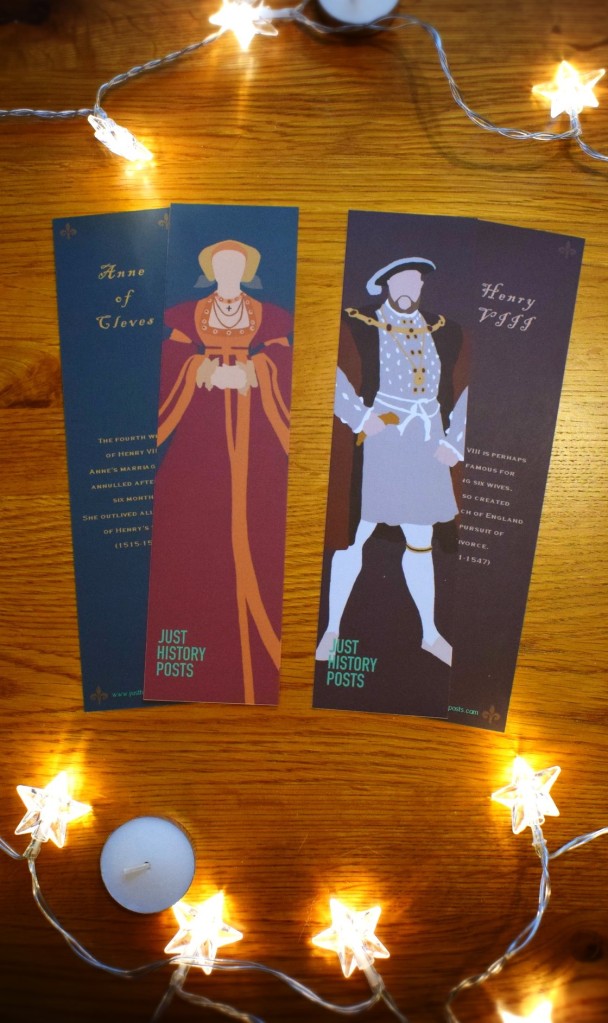


6 thoughts on “Medieval Dating Tips; or, How to Bag Yourself an Eligible Lord or Lady”